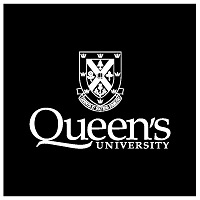Difference between revisions of "CoSMo 2016"
| Line 54: | Line 54: | ||
[[Media:CoSMo2015-vOpstal.pdf | van Opstal syllabus - linear systems theory]]: a great syllabus developed by John van Opstal for CoSMo on using linear systems to model gaze control with theory, exercises and answers to exercises | [[Media:CoSMo2015-vOpstal.pdf | van Opstal syllabus - linear systems theory]]: a great syllabus developed by John van Opstal for CoSMo on using linear systems to model gaze control with theory, exercises and answers to exercises | ||
| − | [https://www.cl.cam.ac.uk/~rmf25/papers/Understanding%20the%20Basis%20of%20the%20Kalman%20Filter.pdf Understanding the Basis of the Kalman Filter Via a Simple and Intuitive Derivation ] | + | [https://www.cl.cam.ac.uk/~rmf25/papers/Understanding%20the%20Basis%20of%20the%20Kalman%20Filter.pdf Understanding the Basis of the Kalman Filter Via a Simple and Intuitive Derivation] <br> |
| + | |||
=== Day 4 - Optimality and data analyses === | === Day 4 - Optimality and data analyses === | ||
Revision as of 16:53, 2 August 2016
This page contains course materials for the CoSMo 2016 summer school.
Contents
Introduction
Aug 1-4
Lecturers: Gunnar Blohm, Paul Schrater, Konrad Kording
Day 1 - Overview of sensory-motor computations
Organization slides
Philosophy of modelling slides
Sensorimotor overview slides
Afternoon tutorial 1 - plotting neural data
Here is the file [Stevenson Data Set]
As part of the tuning curve exercise we will understand it.
Afternoon tutorial 2: gain modulation for reference frame transformations
The goal of this tutorial is to understand how gain modulation can be used for reference frame transformations and how gain modulation can emerge from training a simple artificial neural network carrying out reference frame transformations.
There are 2 different approaches to solving this:
- exact determination of read-out weights from eye-position gain-modulated neurons as in this seminal paper. Here the solution can be found by computing the least-square optimal set of weights mapping the gain-modulated neurons (population code) to head-centered output neuron(s). For this to work, population code neurons need to be of the exponential function family.
- training a neural network to perform reference frame transformations using this code. For this you can plot each individual neuron's receptive field for different eye positions and analyze how the receptive field changes with eye position in each network layer.
Day 2 - Bayesian approaches
Bayesian perception - an introduction: a tremendous book written by Wei Ji Ma, Konrad Kording, Daniel Goldreich
Morning lectures and tutorial (Konrad)
Conditional Probabilities slides
Tutorial and additional steps for extra points
Afternoon lectures and tutorial (Paul)
Here are tutorial instructions. Please also read the papers by Lappe and Seno.
Day 3 - Linear systems
van Opstal syllabus - linear systems theory: a great syllabus developed by John van Opstal for CoSMo on using linear systems to model gaze control with theory, exercises and answers to exercises
Understanding the Basis of the Kalman Filter Via a Simple and Intuitive Derivation
Day 4 - Optimality and data analyses
TBD
Jul 31 - Aug 14
Curtesy: Konrad Kording
You can get the DREAM project from Gunnar on a USB drive. DREAM can also be downloaded piece-wise (data sets, models, tools, and documentation) from CRCNS: http://crcns.org/data-sets/movements/dream/downloading-dream. You will need to create an account on CRCNS to be able to download the project files.
If you want "all" of DREAM (models, tools, and documentation), click here: AllDream.zip
- If you're familiar with svn and would like info/credentials for code in the repository, contact Ben Walker
Here's the latest version of LoadDreamPaths.m. (This script should work for all OSes.)
Here is a description of data sets currently in Dream. Dream is growing, but this list is accurate as of the time of the summer school (click on the link to access the related publication).
- Burns -- reaching with head tilt and left/right visual perturbations
- Corbett -- reach trajectory predictions based on EMG and gaze movements
- Fernandes -- reaching with uncertain and rotated midpoint feedback
- Flint -- decoding of reaching movements from local field potentials
- Kording -- reaching with uncertain midpoint feedback
- Mattar 07 -- generalizing from one, two or multi targets to another direction
- Mattar 10 -- reaching to a distance (short/long), generalizing to the other one (long/short)
- Ostry -- move in force field, get an estimation of where the hand is
- Scott -- monkey (no spike), center out: even and not evenly distributed targets, also a forward/back
- Stevenson -- center out, monkey with neural time stamps
- Thoroughman -- reach adaptation to perturbations with different complexity
- Vahdat -- movement in force field with FMRI scans pre/post learning
- Wei 08 -- visual perturbations, cursor shown only at target
- Wei 10 -- movement in differing force fields
- Young -- movement time stayed the same, but distance changed; fast, medium, slow reaches.
Group projects
Jul 31 - Aug 14
Here are some ideas for 2-week project topics.

